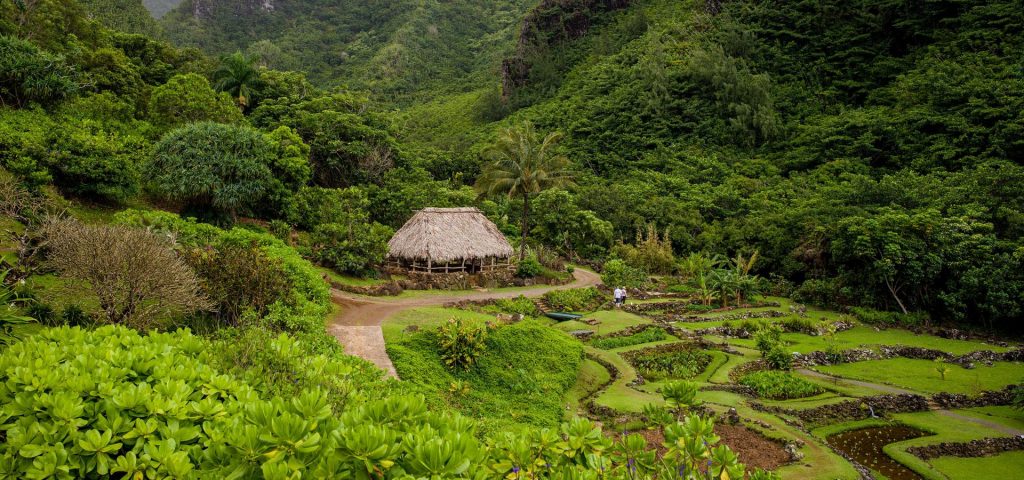This holiday season, NTBG is challenging supporters to eat locally-grown, seasonal meals in honor of our fall campaign. No matter where you live, your food choices impact your local economy, ecosystem, and public health. Join us by donating to the Healthy Plants, Healthy Planet campaign to perpetuate the survival of plants, ecosystems, cultural knowledge of tropical regions, and support food security worldwide. Explore the recipes and resources below to get started.
Help NTBG continue our work supporting sustainable food systems. All donations made before December 31 will be matched up to $100,000
Taking us up on our challenge? As you make your holiday grocery lists, consider using locally grown, seasonal ingredients. We’re sharing a few of our favorite recipes below for some inspiration.
Show us what you create! Share your images with NTBG on Facebook @saveplants, and on Instagram and Twitter @ntbg. Use the #ntbgrecipechallenge and be entered to win a prize!
This Kalo Pie Recipe is a Hawaiian inspired take on the traditional thanksgiving desert. Guaranteed to be a hit with your friends and family!
Wondering how to sign up for a Community Supported Agriculture (CSA) subscription or where you can buy breadfruit in Hawaii? Check out the links below to find a source near you.
Breadfruit Locator: https://eatbreadfruit.com/pages/findbreadfruit
Community Supported Agriculture (CSA) and Farm Locator: https://gofarmhawaii.org/find-your-farmer/
Agroforestry is a method of farming that integrates trees, shrubs, and other plants with crops and/or animals in ways that provide economic, environmental, and social benefits. One of the highlights of the McBryde Garden is NTBG’s Regenerative Organic Breadfruit Agroforestry (ROBA) project which acts as a living classroom and 2-acre demonstration project. The data that is collected by our ROBA team is used to advise local farmers on best practices and techniques. This year, our team was able to ground proof ROBA’s productivity and display breadfruit agroforestry’s ability to support community resilience in times of need. So far, over 6,000 lbs. of breadfruit has been donated to local food banks on Kauai!
Agroforestry produces 10% – 60% more crops than monocrop farming and contributes to the restoration of ecosystem function. Commercial monocrop farming typically destroys ecosystems, requires more resources (water, fertilizer, land) and often require liberal pesticide usage. Small, local farms on the other hand often rebuild crop and insect diversity, use less pesticides, enrich the soil, create havens for wildlife, and produce tastier food. NTBG’s work supporting sustainable food systems directly contributes to perpetuating the survival of plants, ecosystems, and cultural knowledge of tropical regions.

The Hawaiians have a saying, “He wa’a he moku, he moku he wa’a,” which roughly translates to “the canoe is an island, and the island is a canoe.” Voyagers survived a nearly three month canoe trip across the sea carrying a botanical toolkit that provided everything they needed for survival. Once they made land, Polynesians carefully incorporated this toolkit into the islands’ environment.
Hawaiians understood the fatal consequences of upsetting the balance of an ecosystem and developed a culture that co-existed with the land and even enhanced ecosystem function. Need proof it works? Using agroforestry techniques and sustainable practices, ancient Hawaiians’ food systems supported nearly half million people on the island of Kauai alone. Today, the County of Kauai has a population around 80,000, imports nearly 90% of its food and native plants occupy only a small percent of the land mass.
Today, NTBG adapts ancestral resource management practices to address contemporary conservation challenges and restore health, function, and resilience to the land we manage. This approach is known as biocultural conservation.